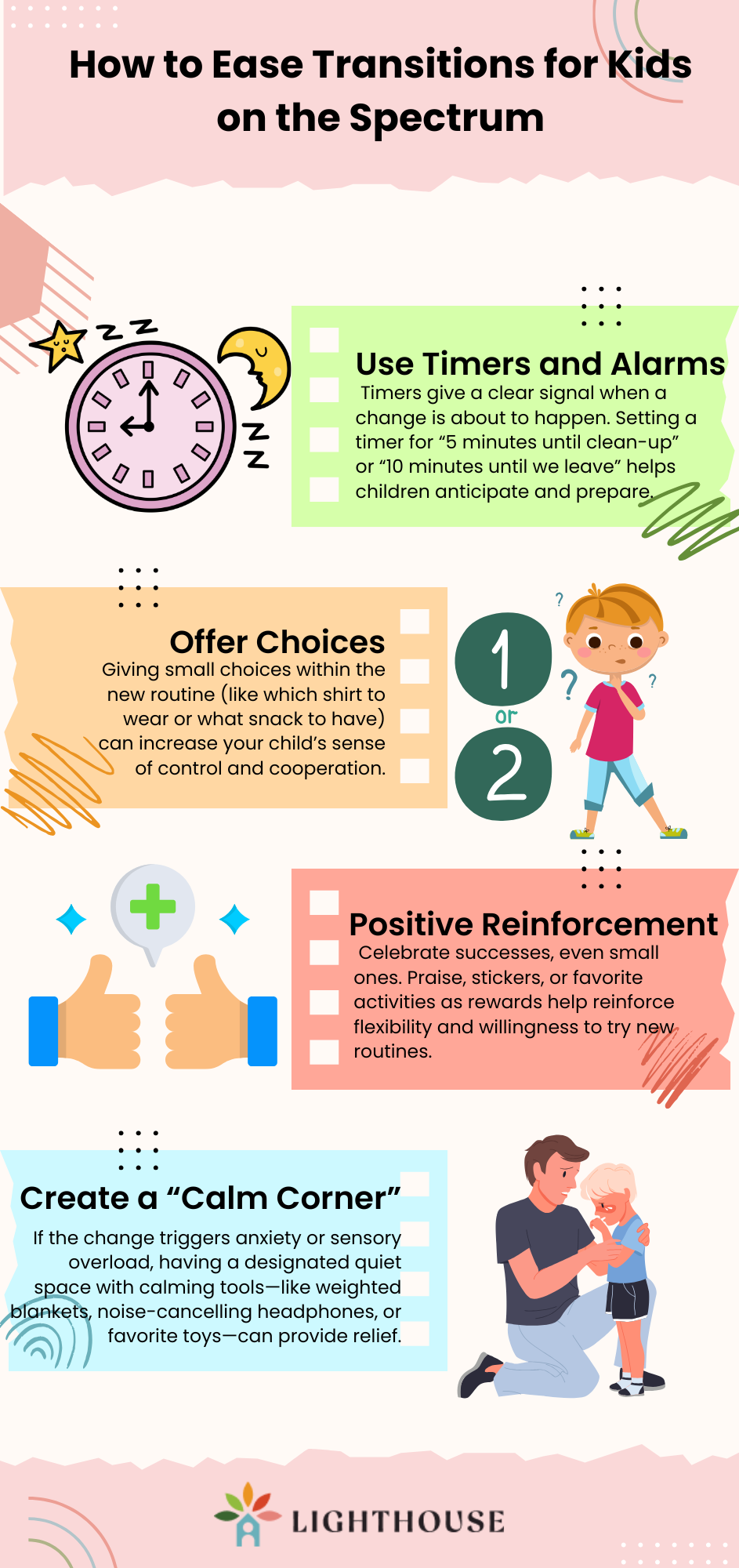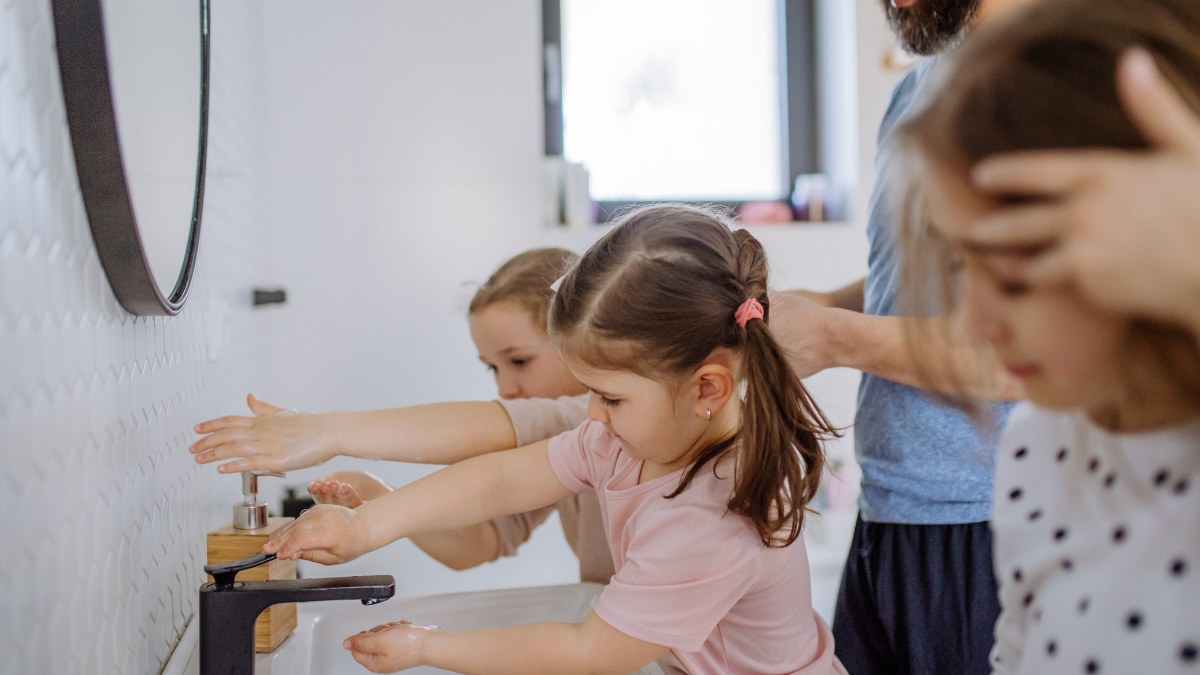Key Points:
- Routine changes can be especially challenging for children with autism due to their need for predictability and structure.
- Successful transitions rely on preparation, clear communication, and gradual introduction of change.
- Practical strategies like visual supports, social stories, and consistent reinforcement can reduce anxiety and help children adapt.
Changes to routines are often tough for kids with autism. Because they tend to thrive on predictability, even small shifts can lead to confusion, frustration, or anxiety. The challenge around autism and routine changes isn’t just about stubbornness or resistance—it’s about how their brains process and understand the world. When the expected order is disrupted, it can feel overwhelming.
Whether it’s moving to a new classroom, shifting daily schedules, or adjusting bedtime rituals, parents often find themselves looking for strategies that actually work. This article dives into practical, evidence-based tips to support your child through these transitions with less stress and more success.
 Why Routine Matters for Kids with Autism
Why Routine Matters for Kids with Autism
Before jumping into tips, it helps to understand why routine is so crucial. For many children on the spectrum, routines create a sense of safety. They reduce the guesswork in their day and make their environment more predictable.
When routine changes, it can trigger:
- Increased anxiety or distress
- Behavioral outbursts or shutdowns
- Difficulty focusing or engaging in activities
- Sleep disturbances or changes in appetite
Knowing this helps us approach transitions with empathy and patience, rather than frustration.
Preparing for Routine Changes: The Foundation of Success
A key part of easing routine changes is preparation. Rushing or springing changes unexpectedly tends to backfire. Instead, follow these steps to get your child ready:
- Advance Notice
Let your child know what’s coming well before the change happens. This can be hours, days, or even weeks ahead depending on the complexity of the change. For example, if you’re switching a bedtime, talk about it during breakfast or dinner. - Visual Schedules
Use pictures, symbols, or simple written words to show what the new routine will look like. Visual schedules are powerful tools because they provide a concrete reference your child can check again and again. - Social Stories
These are short, personalized stories that explain the change in a calm, straightforward way. They describe the situation, the feelings your child might have, and what to expect. Social stories help build understanding and reduce fear of the unknown. - Practice Runs
If possible, practice the new routine in advance. For example, if a child will be eating lunch in a new cafeteria, try visiting the cafeteria beforehand during a quiet time. - Consistent Language
Use the same words or phrases when discussing the change. Consistency in language helps your child make connections and feel more secure.
How to Ease Transitions for Kids on the Spectrum
Once the groundwork is laid, specific tools and techniques can help your child adapt in the moment. Here are some of the most effective:
 Top Tips for Managing Routine Changes: A Detailed Guide for Parents
Top Tips for Managing Routine Changes: A Detailed Guide for Parents
Helping your child manage routine shifts involves more than just a quick fix. Here’s a thorough set of steps and considerations that can make a difference:
- Understand Your Child’s Unique Needs
Each child with autism is different. Some may react strongly to changes in physical environment, others to social routines. Observe and note what kinds of changes trigger the most distress. This helps tailor your approach. - Break Down the Change Into Smaller Steps
Rather than switching everything at once, break the change into manageable parts. If a bedtime needs to move from 8 p.m. to 7 p.m., try shifting it by 15 minutes every few days. - Maintain Other Consistent Elements
When changing one part of the routine, keep other elements the same. If mealtimes shift, try to keep the order of activities before and after consistent to provide stability. - Use Transitional Objects
A favorite blanket, toy, or even a special piece of clothing can help your child feel grounded when routines shift. - Collaborate with Teachers and Therapists
Ensure everyone involved in your child’s care uses similar strategies for routine changes. Consistency across home and school reduces confusion. - Prepare Yourself and Stay Calm
Children pick up on caregiver emotions. Approaching changes with calm confidence can help your child feel safer and more supported. - Document and Track Progress
Keep a simple journal or log of how your child handles routine changes. Note what works and what doesn’t. This ongoing feedback loop helps refine strategies.
 Supporting Your Child Emotionally During Routine Changes
Supporting Your Child Emotionally During Routine Changes
Routine changes don’t just affect behavior—they impact feelings and emotional well-being. Addressing this emotional side can make transitions smoother:
- Validate Their Feelings
Acknowledge that the change is hard and it’s okay to feel upset or confused. Simple statements like “I know this feels strange right now” go a long way. - Teach Coping Skills
Techniques like deep breathing, counting, or using a stress ball can help children manage feelings of anxiety. - Stay Patient and Available
Be ready to provide extra comfort and reassurance. Sometimes just being there quietly is enough.
Wrapping It Up: The Role of ABA Therapy in Supporting Routine Changes
We know how challenging routine changes can be—especially for children with autism who thrive on structure and predictability. At Lighthouse ABA, we use Applied Behavior Analysis (ABA) to help children build flexibility, cope with transitions, and feel safe as they adapt to change.
Whether your family is adjusting to a new school year, bedtime routine, or daily schedule, our experienced therapists are here to support you with personalized, evidence-based care.
Looking for ABA therapy in New York or North Carolina? Lighthouse ABA offers personalized, family-centered care to help your child thrive through every transition. Schedule a consultation today!


